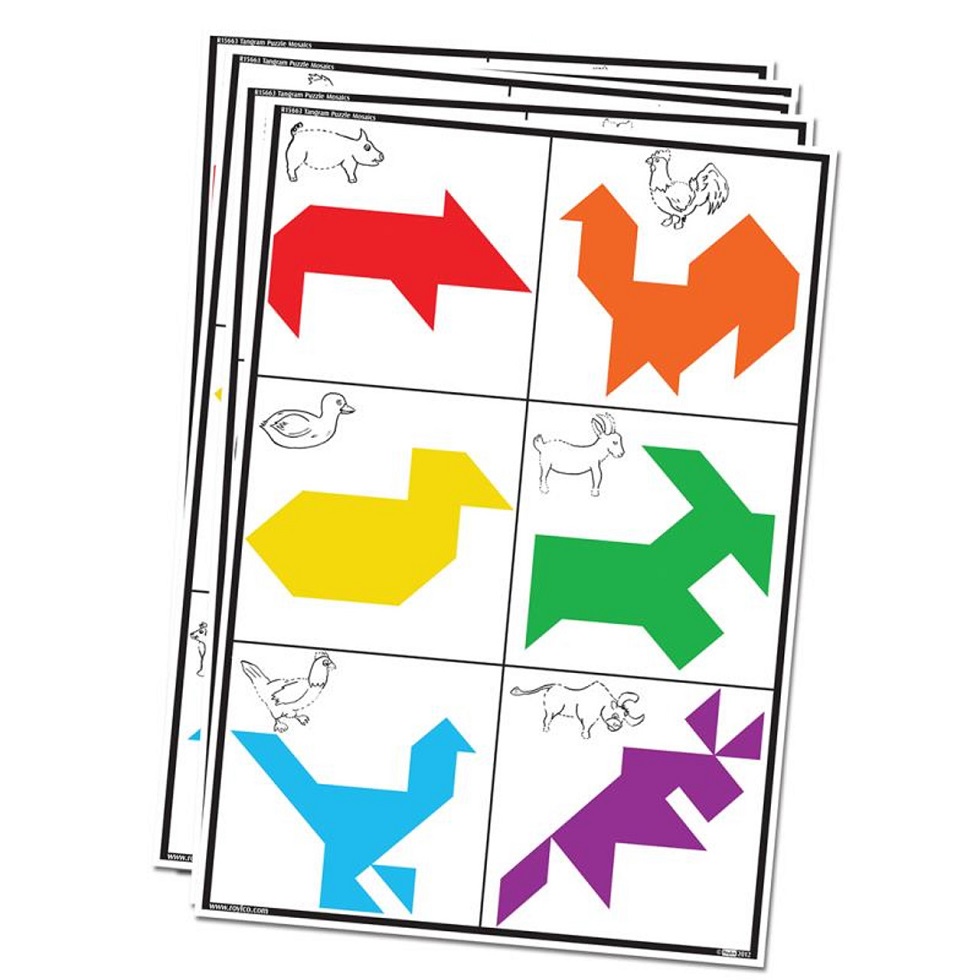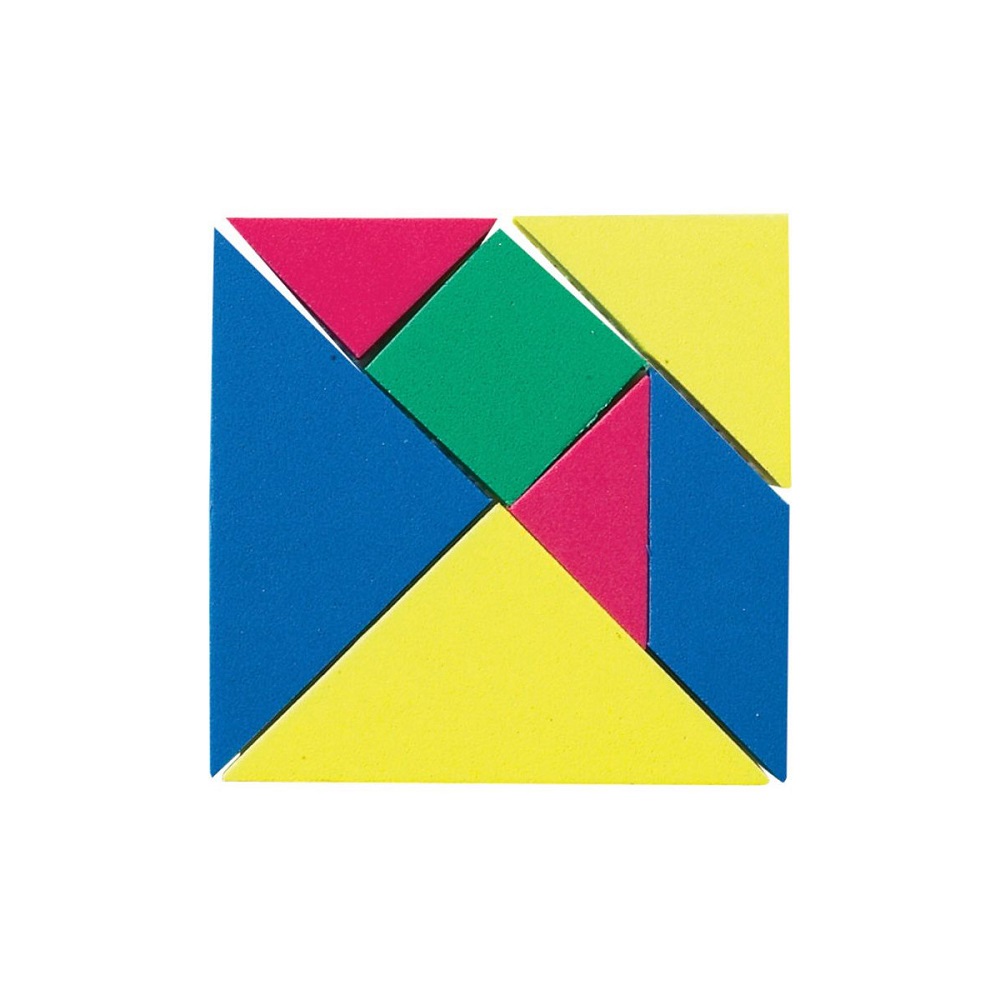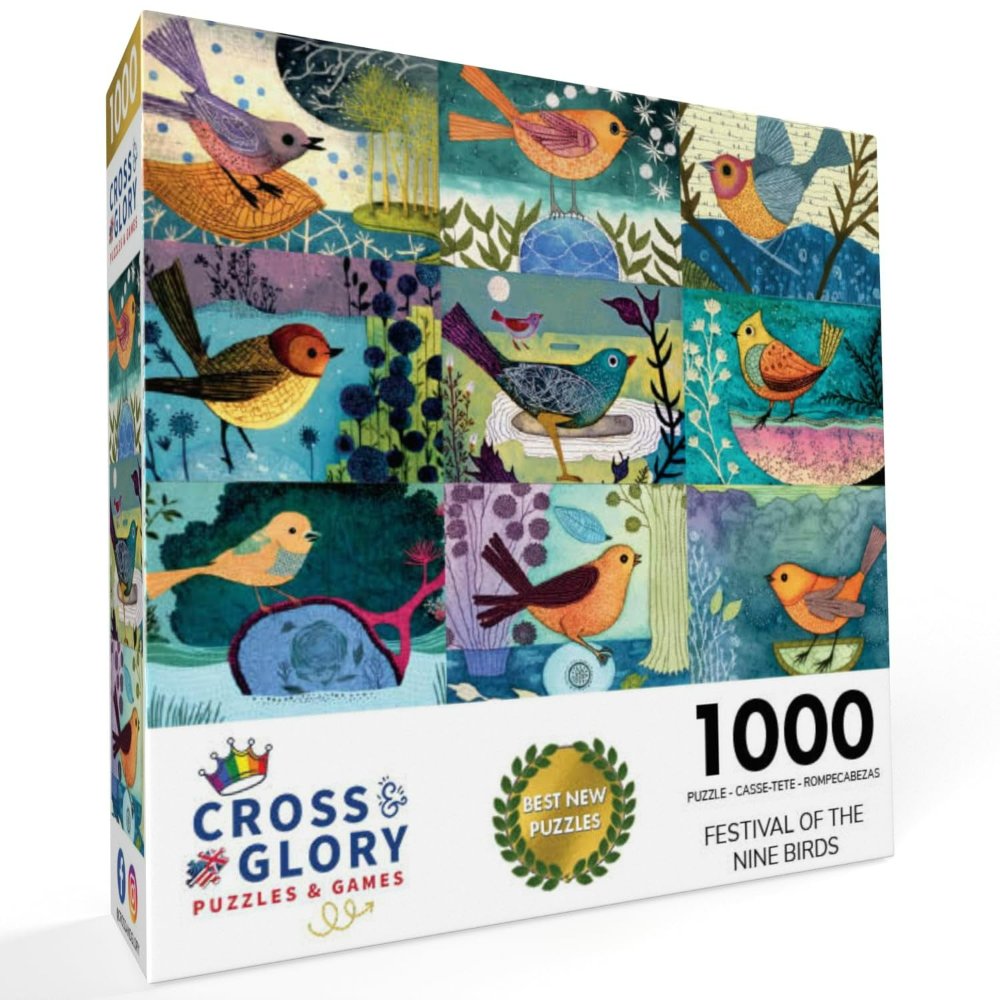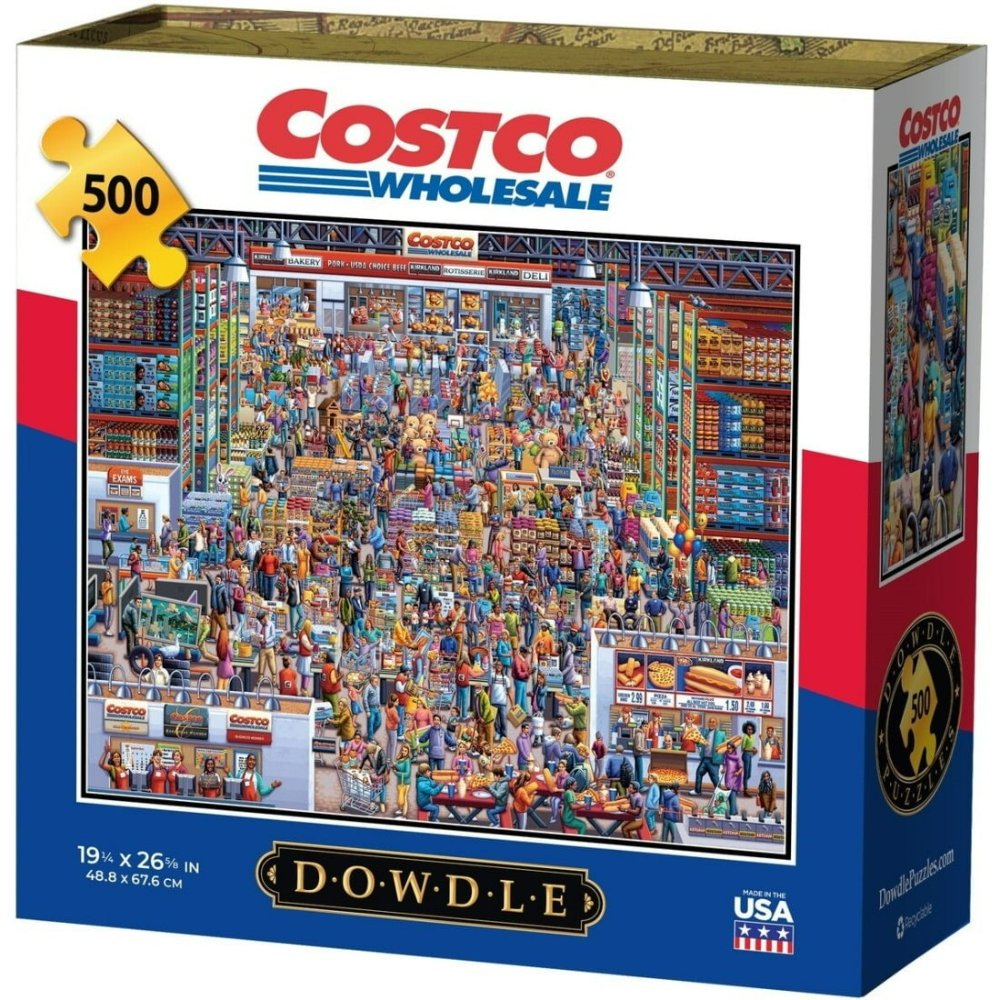The Origins of Tangrams
Tangrams have fascinated people for centuries. Their origin, much like the shapes, is quite enigmatic. Historians believe that tangrams date back to China during the Song Dynasty. The exact timeline ranges between the years 960 and 1279. The name ‘tangram’ itself may come from the ‘Tang’ in ‘Tang Dynasty’. However, others argue it could be a hybrid of ‘Tang’ and ‘diagram’, reflecting the puzzle’s nature.
As the story goes, the game might have started when a tile, called a ‘table’, fell and shattered. Legend says a Chinese Emperor, who cherishes this tile, saw potential in the seven resulting pieces. He then set about arranging them in various shapes, which led to the birth of tangrams. These simple, yet versatile puzzles, quickly became popular in China. They not only served as mere amusements but also as tools for storytelling and expression.
By the early 19th century, tangrams had spread to Europe and America, gaining international acclaim. Their spread coincided with the rise of trade routes and the increasing exchange of culture and knowledge. In Western societies, tangrams captured imaginations so vividly that books about them started to appear. They called these books ‘tangram books’, filled with challenges and shapes to create.
Thus, from ancient China to the hands of puzzle enthusiasts across modern times, the tangram has traveled both time and geography. Its simple concept – re-arranging seven tans to create countless shapes, has had a lasting appeal. Indeed, the legacy of tangrams is one of great puzzling enjoyment and creativity that continues to endure.
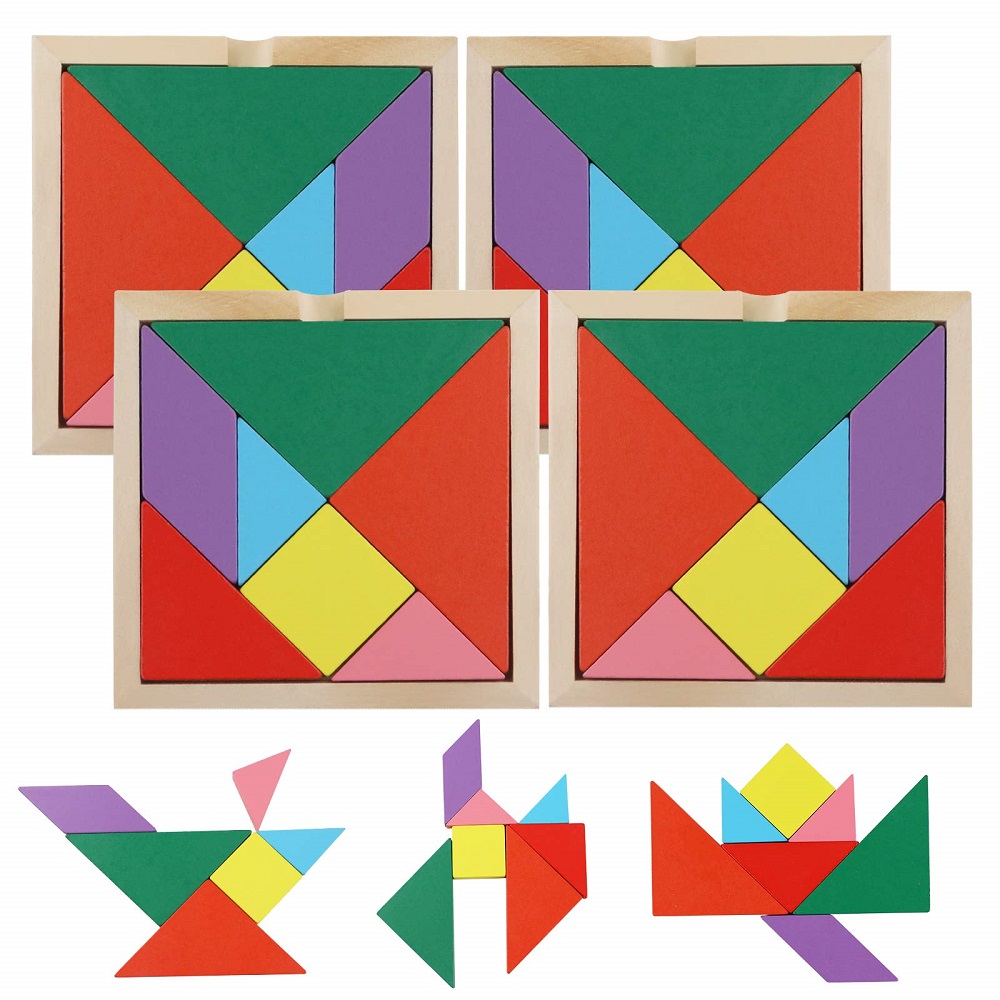
What is a Tangram?
A tangram is a Chinese puzzle that consists of seven pieces, or tans. These tans are geometric shapes. They include five triangles, one square, and one parallelogram. You can move, rotate and flip these pieces. Your goal is to form a specific shape using all seven pieces. This shape can be any silhouette or figure. It could represent animals, people, or objects. The puzzle does not allow overlapping pieces.
The beauty of a tangram lies in its simplicity and depth. With just seven pieces, the possibilities are endless. The tangram is a game of logic and creativity. It exercises the mind and promotes spatial awareness. Artists and educators often use tangrams. They help to teach geometry, proportion, and problem-solving. For puzzle enthusiasts, tangrams provide a quick and enjoyable challenge. The goal is clear: form the target shape with all seven tans fitting together perfectly.
So, a tangram isn’t just a set of random shapes. It’s a timeless tool for imagination and learning. It encourages players to explore geometric concepts. And it’s a testament to the idea that sometimes, the simplest things can be the most profound.
The Seven Tans: Building Blocks of Tangrams
Tangrams consist of seven unique pieces known as tans. Here is a closer look at these fundamental building blocks:
- Five Triangles: The tangram includes two large triangles, one medium triangle, and two small triangles, each with different angles.
- One Square: This piece adds variety to the potential shapes and is crucial to many puzzle solutions.
- One Parallelogram: This slanted piece allows for more dynamic figures and introduces complexity.
The versatility of these seven tans is truly amazing. They can form seemingly infinite combinations to represent various silhouettes. Each piece is vital. Together, they must fit perfectly to complete a puzzle. The tangram definition, at its core, revolves around these seven shapes. By re-arranging them, one can create animals, humans, objects, and abstract patterns. It’s a blend of imagination and geometry. For both play and learning, the seven tans serve as a canvas. They invite us to think outside the box and find unique solutions to visual problems. Whether for children or adults, tangrams offer an engaging way to explore the world of shapes. Cultivating spatial skills and creative thinking are just a few benefits these puzzles provide. Tangram puzzles are more than mere entertainment. They are gateways to greater understanding and appreciation of geometry and art.
Tangrams in Education: A Learning Tool for All Ages
Tangrams serve as powerful educational tools for learners of all ages. These captivating puzzles offer numerous educational benefits. They encourage creativity and out-of-the-box thinking. Children and adults alike can grow their spatial and geometry skills through tangrams. Here’s how tangrams make a significant impact in education:
- Enhances Spatial Awareness: Constructing shapes from the seven tans boosts understanding of spatial relationships. It helps in visualizing and manipulating objects in one’s mind.
- Teaches Geometric Concepts: Tangrams provide hands-on experience with geometry. Playing with these shapes teaches angles, symmetry, and area without the need for complex formulas.
- Promotes Problem Solving: Solving tangram puzzles involves figuring out how pieces can fit together to form the target shape. This strengthens critical thinking and problem-solving skills.
- Improves Concentration: Focusing on puzzle solutions demands attention and concentration, which is a valuable skill in all learning.
- Encourages Perseverance: Tangrams can be challenging. Working through tough puzzles teaches persistence and resilience.
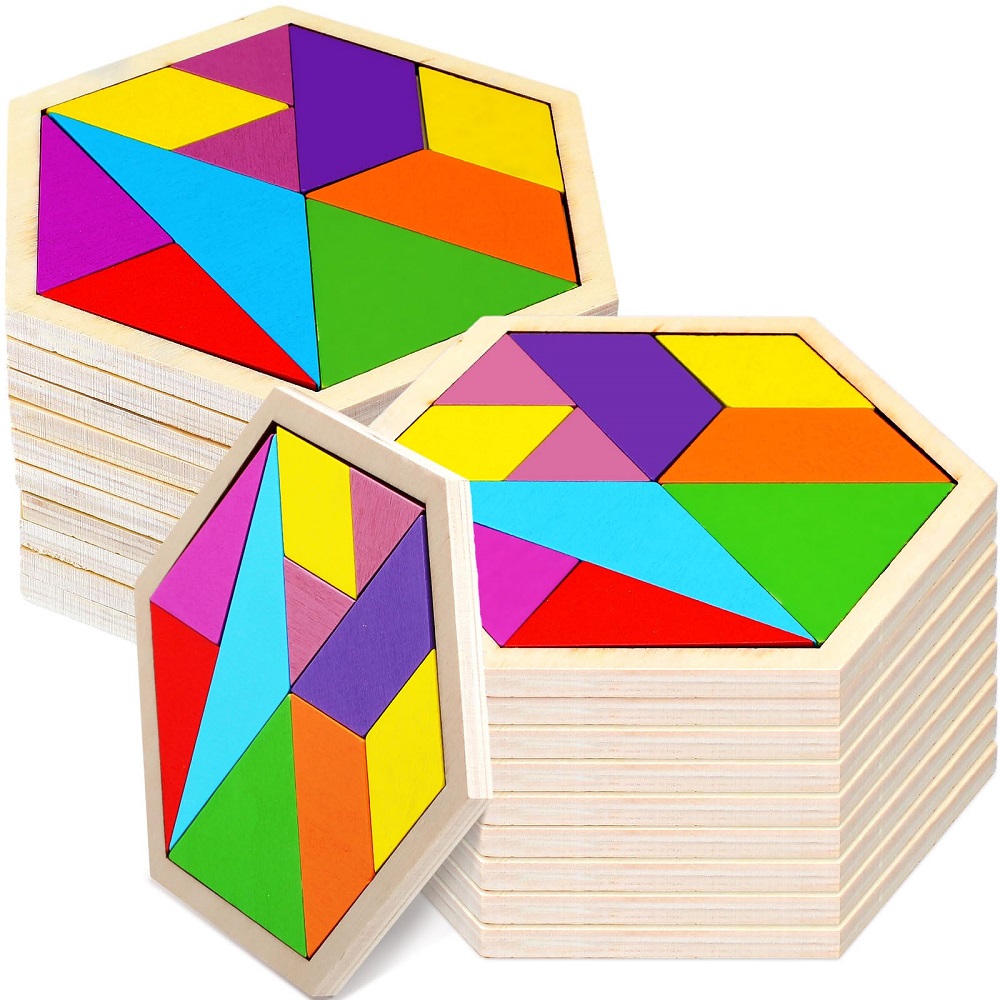
In the classroom, teachers often use tangrams for interactive lessons. They apply the tangram definition to hands-on activities that make abstract concepts concrete. Tangram puzzles fit perfectly in math curricula but also in lessons on history and art, linking them to the real world. Educational kits sometimes include tangrams to spark interest in STEM fields. For younger students, playing with tangrams can also enhance fine motor skills. Adults may use tangrams to keep their minds sharp and engage in lifelong learning. As a tool that crosses generational boundaries, tangrams have proven to be a versatile and timeless component in education.
Tangram Puzzles: Rules and How to Play
Understanding the rules to play tangram puzzles is straightforward. The main aim is to create a specific shape using all seven tans. Here are the basic guidelines you need to follow:
- Use All Pieces: You must use all seven tans to form the desired figure.
- No Overlapping: Position the tans so that they do not overlap.
- Fit Perfectly: The tans must fit together perfectly with no gaps or spaces between them.
- Match The Silhouette: The shape you create must match the target silhouette exactly.
- Full Freedom of Movement: You can rotate, flip, or slide the tans as needed to achieve the correct formation.
These simple rules of tangrams underpin the game’s challenge. The tangram definition’s beauty lies in its mix of simplicity and complexity. Players can use these rules to attempt recreating various figures, ranging from the most basic to the exceptionally complex. Examples include shapes of animals, people, objects, and abstract designs. By following these rules, you engage in a mental exercise that sharpens your problem-solving skills and boosts creativity.
Playing tangram puzzles can be both enjoyable and educational. Whether in a classroom setting or during a casual game at home, tangrams offer a playful way to explore geometric principles. As you become more proficient, you might find joy in coming up with your own unique shapes and challenges. This reflects the tangram’s enduring popularity and its role as a beloved puzzle for centuries.
The Mathematics Behing Tangrams
The tangram puzzles are not just about fun and creativity; they are steeped in mathematics. Let’s dive into the mathematical principles that make tangrams a brain-teasing delight:
- Geometry in Practice: Tangrams are a hands-on way to explore geometry. They involve concepts like congruence, similarity, and rotational symmetry.
- Problem Solving: The challenge of tangrams is solving the shape. This process enhances logical thinking and spatial reasoning.
- Shape Combinations: Each tan can connect to others in multiple ways. This illustrates the principles of geometric combination.
- Area and Perimeter: Players can learn about area and perimeter by fitting tans together without gaps.
- Fractions and Ratios: Comparing the sizes of tans helps understand fractions and ratios.
Educators often use tangrams in math lessons. Tangrams can demonstrate how geometric shapes fit together to create new forms. They show that areas can remain constant even as perimeters change. Students can see real-world applications of mathematical principles through tangrams.
A tangram encourages learners to apply math skills in a tangible way. As players arrange the tans, they learn that different shapes can share the same area. This concept is vital in understanding more advanced topics in geometry.
In summary, the tangram puzzles embody essential mathematical concepts. They provide a visual and interactive method for grasping complex ideas. As you solve tangram challenges, you are also sharpening mathematical intuition. Whether you are young or old, tangrams are an excellent way to make math engaging and accessible.
Tangrams in Pop Culture and Modern Design
Tangrams have found their way into pop culture and modern design. These puzzles have inspired artists and designers around the world. The tangram definition of combining shapes has led to the creation of various artworks. Examples include tangram-themed clothing, jewelry, and home decor. Here are some ways tangrams influence today’s culture and design:
- Fashion: Designers use tangram patterns in their clothing lines to add geometric flair.
- Jewelry: Tangram shapes are popular in jewelry design, offering a mix of elegance and playfulness.
- Furniture and Home Decor: The seven tans appear in innovative furniture designs and decorative items.
- Video Games: Tangrams feature in video games that challenge players with shape puzzles.
- Logos and Branding: Companies incorporate tangram designs into their logos for a unique look.
The flexible nature of tangrams means they can adapt to changing trends. They blend tradition with modern aesthetics. This combination makes tangrams relevant across different aspects of culture. Their impact is evident in how designers view and use geometric shapes.
By integrating tangrams into design, creators celebrate both history and creativity. Tangrams have shown that classic puzzles can evolve. They become fresh and engaging for new generations. These puzzles prove that the tangram definition is more than a game. It is a source of inspiration and a bridge between past and present design trends. As the use of tangrams grows, so does our appreciation for geometric beauty in everyday life.
Tips and Tricks for Mastering Tangram Puzzles
Mastering tangram puzzles can be a rewarding experience, but it can also pose a challenge. To become a tangram expert, consider the following tips and tricks:
- Start Simple: Begin with easy shapes and gradually work your way up to more complex puzzles. This builds confidence and helps you understand how the tans can fit together.
- Study Shapes: Pay attention to the patterns and angles of the pieces. Notice how the tans form right angles and how they can combine to build new shapes.
- Visualize Solutions: Before moving the pieces, try to imagine how they can come together to form the goal shape. Visualization can save time and reduce trial and error.
- Use Work Space Efficiently: Spread out the pieces and give yourself ample room to experiment with different configurations.
- Rotate and Flip: Remember, each piece can be rotated or flipped. This greatly increases the number of potential combinations and can lead to a solution more quickly.
- Practice Often: Regular practice with tangram puzzles will improve your spatial awareness and problem-solving abilities. The more you play, the better you get.
- Challenge Yourself: Don’t shy away from tough puzzles. Solving difficult shapes sharpens your skills and enhances your creativity.
- Break It Down: If a puzzle seems too hard, break it down into smaller parts. Solve for parts of the shape and then put them together.
Employing these strategies can enhance your enjoyment and skill in playing tangram puzzles. Keep in mind the tangram definition you have learned and the satisfaction of finding solutions to complex puzzles will follow. With practice, patience, and a logical approach, you’ll master the art of tangram puzzles in no time.
